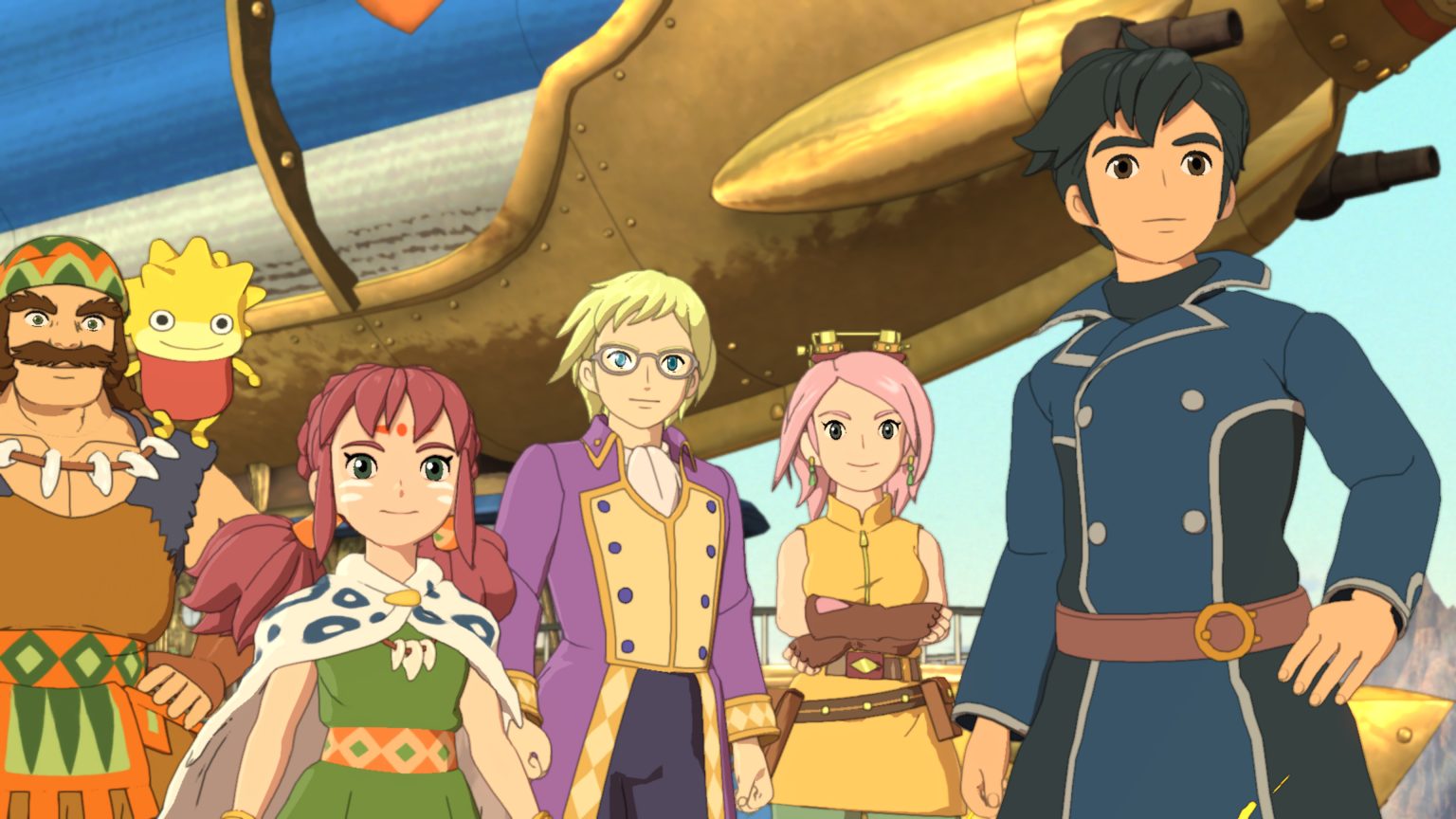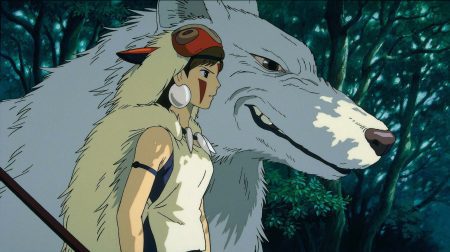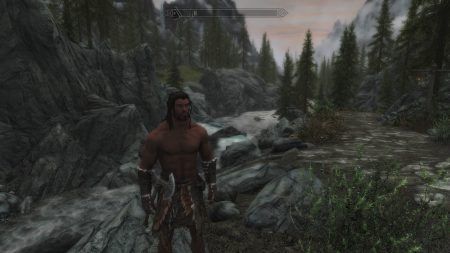God, remember 2013? I vividly remember booting up my PlayStation 3, flagrantly ignoring my considerably lengthy backlog to search the PSN store and choose a demo at random to play. In my early 20s, I admit I lacked the patience to give a game long to entice me.
That was the case when I ultimately selected Ni no Kuni: Wrath of the White Witch, drawn both to the hype I’d heard and the fact that “well, it looks interesting enough!” Did I mention I was kind of a mess at the time and didn’t have my Hayao Miyazaki/Ghibli awakening until about six years later? (We’ll circle back to Ghibli in a second.)
If memory serves, Ni no Kuni had been out for a solid couple of months before I downloaded that fateful demo. And I won’t bury the lede here: I hated it. Well, perhaps “hated” is a bit hyperbolic, but I certainly didn’t get it.
In hindsight, Ni no Kuni felt like an impossible game to demo. What I was expecting was more “Hey, it’s like Pokémon!” but instead I got “Hey, it’s like I’m being asked to pilot a plane with no experience whatsoever!”
Was it cute? Yes! Was it cumbersome and intimidating? Absolutely. I thought the combat system was clunky and unwieldy. “Wait, so am I controlling the main character, or the adorable monster? Oh, both? Well, I—oh, and it’s kinda turn-based, but not really? What are these menus?! Yeah, I can’t do this.”
10 minutes. That’s all I gave the demo. I killed probably three enemies, got destroyed after the perceived difficulty gap of the battle system overwhelmed me, and left. If you’d told me then that I’d just dropped one of my favorite action RPGs of all time, in my younger arrogance and poorer taste, I’d have scoffed and told you that Kingdom Hearts III would come out any day now and cement itself as the king of the gaming world forever (hahaha, an opinion piece for later). Oh, the delusions I had in 2013.

A Phoenix Rises
Jump ahead a decade. Game Pass had graced Xbox consoles around the world, and suddenly, games that were notoriously discarded by gamers unwilling to fork over their money got reappraisals across the board. My partner and I were scrolling through the catalog after beating (and loving) Immortality, and something caught her eye. “Look, it’s Ni no Kuni! I always wanted to play that!”
By this time, my tastes were significantly more refined, and it was my partner who actually sat me down a few years prior and formally gave me my lessons in the school of Ghibli. Spirited Away, Princess Mononoke, Grave of the Fireflies, Ponyo—you name it. Now, my eyes could behold true art! I still felt a tinge of reservation over those misguided impressions from before, but I figured, “Eh, at least it’ll be easy on the eyes.”
What followed would be an action RPG masterclass that—barring some mild grinding hiccups—had me hooked from beginning to end. I mean, I felt feelings playing this game; I had a gaming palate that transformed from school apple juice where you could taste the distinct lack of actual apples to being able to savor the “notes” and “accents” in the grandiose winery that is the gaming industry.
Before I get into the nitty-gritty here, I want to be transparent: Ni no Kuni is the kind of game that introduces new mechanics about 20 to 30 hours in. It’s a chunky, complex game that hits that sweet spot of slowly getting you acclimated to its ways, and then, once the student has mastered a lesson, only then does it move on to its next lesson. But I guarantee that giving the game the space and grace to take you on that lengthy journey is well worth it.

Ghibli? Yes, Please!
You can absolutely tell how much influence Studio Ghibli had on this game. The Ghibli aroma lingers in your nostrils through all the dialogue, visuals, and story beats.
For all my Ghibli folks out there, did you know Hayao Miyazaki has an odd fascination with children going through the wringer as part of their coming-of-age tale? Well, boy, let me introduce you to Oliver, our young protagonist who indeed suffers quite a bit along the course of his journey.
Where most people tend to look down on child protagonists for being cloyingly naïve, Oliver’s character arc is so good—especially as it ties into the game’s thematic richness of unity and the dynamics between people and their “opposite” selves.
Not only do you watch as Oliver navigates the world and learns important (often harsh) lessons, but you get to see him grow with Swaine and Esther, his two compatriots. They bond; they struggle; they have their own motivations and lives. Swaine and Esther aren’t just “there”—they matter. The forces of darkness aren’t just cackling, evil jerks—they have larger personalities and reasons for why they do what they do.
Likewise, the familiars you eventually collect and battle alongside are more than just blunt weapons to strike down any encroaching threats. You can feed them to boost their stats (with animations that’ll warm even the coldest of hearts), and they even have favorite foods you can offer which will make them extra happy.
Every location has a story of its own, and most of the side content reveals something quirky or interesting about the characters or setting itself. I teared up at some of the characters’ moments of failure or triumph—that’s how invested I was!
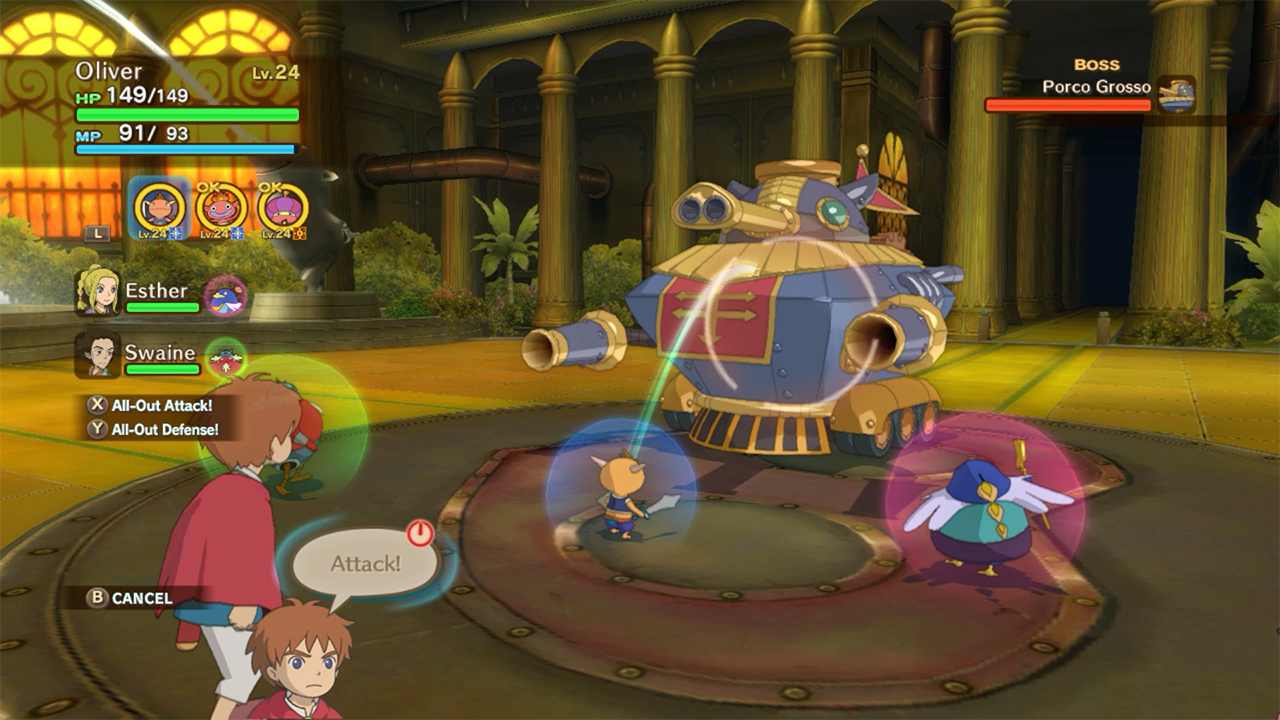
Action RPG Bliss
Gameplay that I once thought was “clunky and unwieldy” was, in fact, a complex, chaotic dance.
Which characters synergized best with which familiars? Is Oliver’s magic best here, or should I use Gogo, the tank of a penguin we found an hour or so ago? Granted, Swaine and Esther can lack a certain sense of self-preservation as you watch them helplessly from across the battlefield, running into a boss’ beautifully animated special attack and consequently throwing your best-laid plans into disarray. But that chaos is the best part! It gives each encounter a crackling, kinetic urgency as you play a game of attack/defend/magic chess with your enemies.
To get to the point: Ni no Kuni does very little wrong. The average playtime of the game is about 45-ish hours, and somehow, at no point during that span of time (I probably clocked in around 60 hours) did I feel a noticeable lull in the gameplay or story.
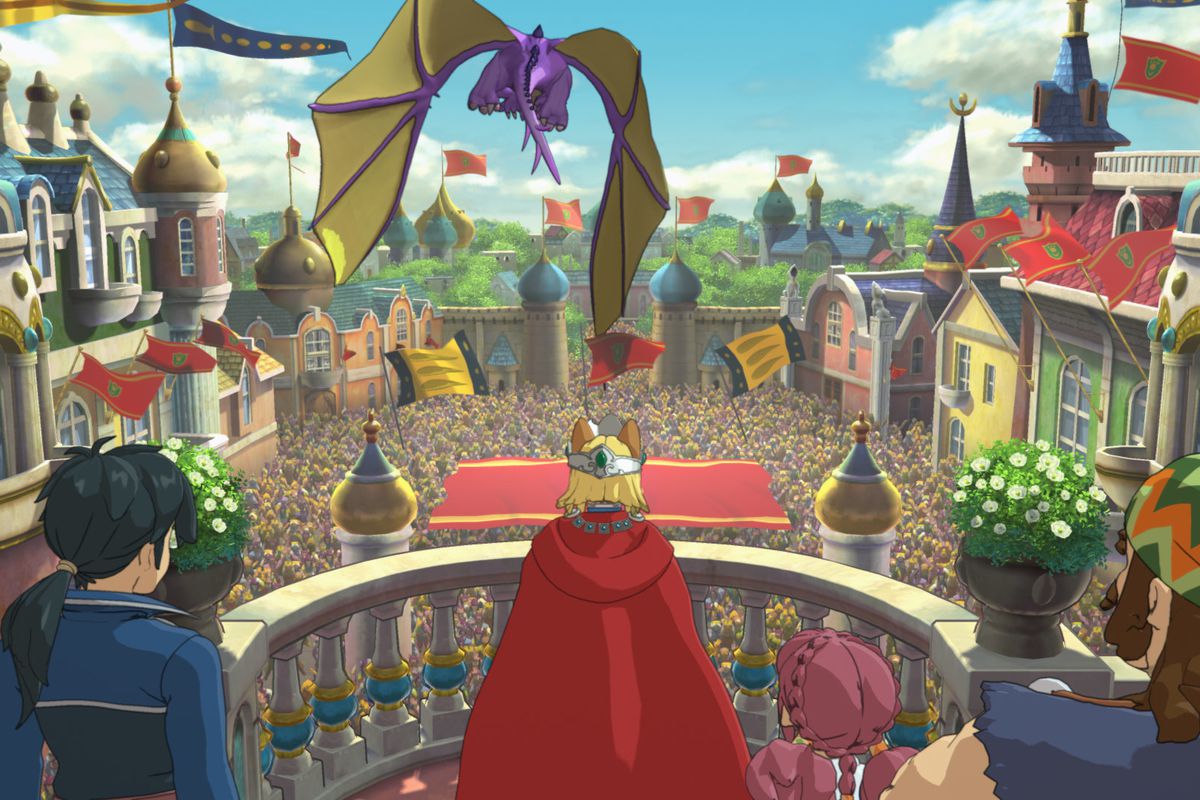
An Unlikely Villain
So, when Ni no Kuni II: Revenant Kingdom popped up on Game Pass a few months later, I was ready. Sure, I knew the familiars were gone and the battle system had been revamped to be more of a “pure” action RPG. I knew Oliver and the gang weren’t the focus anymore and new protagonists would fill out the ranks. I even knew that among Ni no Kuni purists, the second game was considered the unfavorable, ill-tempered, unsuccessful child compared to the first. But I was prepared for all of that and rode the wave of excitement into the unknown.
You know what would’ve been nice to know beforehand? That Studio Ghibli had nothing to do with the sequel. Level-5 was soloin’ it, and guess what? It shows. Now, some may have noticed that when talking about the original Ni no Kuni, I was supremely light on any story spoilers. If you haven’t played the game and I sold you on it at all, I highly encourage you to take the leap as I once did. Hopefully, you won’t be disappointed! (Just remember to farm Tokos for XP if you ever feel under-leveled.)
Here is your official warning: I’m about to spoil the living daylights out of both Ni no Kuni and Ni no Kuni II past this point. If you appreciated the positive, light vibes of this so far and don’t want to read pure vitriol, I recommend you click away now. Because Ni no Kuni II is such a lesser product than its predecessor that it’s almost inconceivable Level-5 developed both games.

Taking Off the Kid Gloves
The calm: It should always be emphasized that developers don’t wake up and say, “Oh, I’m gonna make a terrible game today!” Video games are art, and regardless of the quality of the end product, there should never be a simplification of such a Herculean effort in the form of “this sucks” with no further insight or analysis.
It’s why gaming critics exist to (ideally) articulate why a game doesn’t work rather than dunking on it and implicitly invalidating years of game development. And that’s only on the consumer side of the issue; sometimes, publishers bump up a game’s release date before it’s ready—and even actively meddle in the vision of the developers in an effort to capitalize on and chase trends.
So, despite what you’re about to read, know that it comes from a place of love, affection, and an understanding that game development is hard and fraught with many stressors and misfortunes.
The storm: But Ni no Kuni II is a blasphemous pretender that fails in nearly every regard. The funniest thing about the blighted sequel is that, in a vacuum where the first game doesn’t exist, I could see where some may label Ni no Kuni II as an inoffensive, mildly intriguing—if by-the-numbers—JRPG. However, I struggle to see fans of the first game favoring this one in any way, shape, or form. So, first, let me briefly run down the game’s opening.
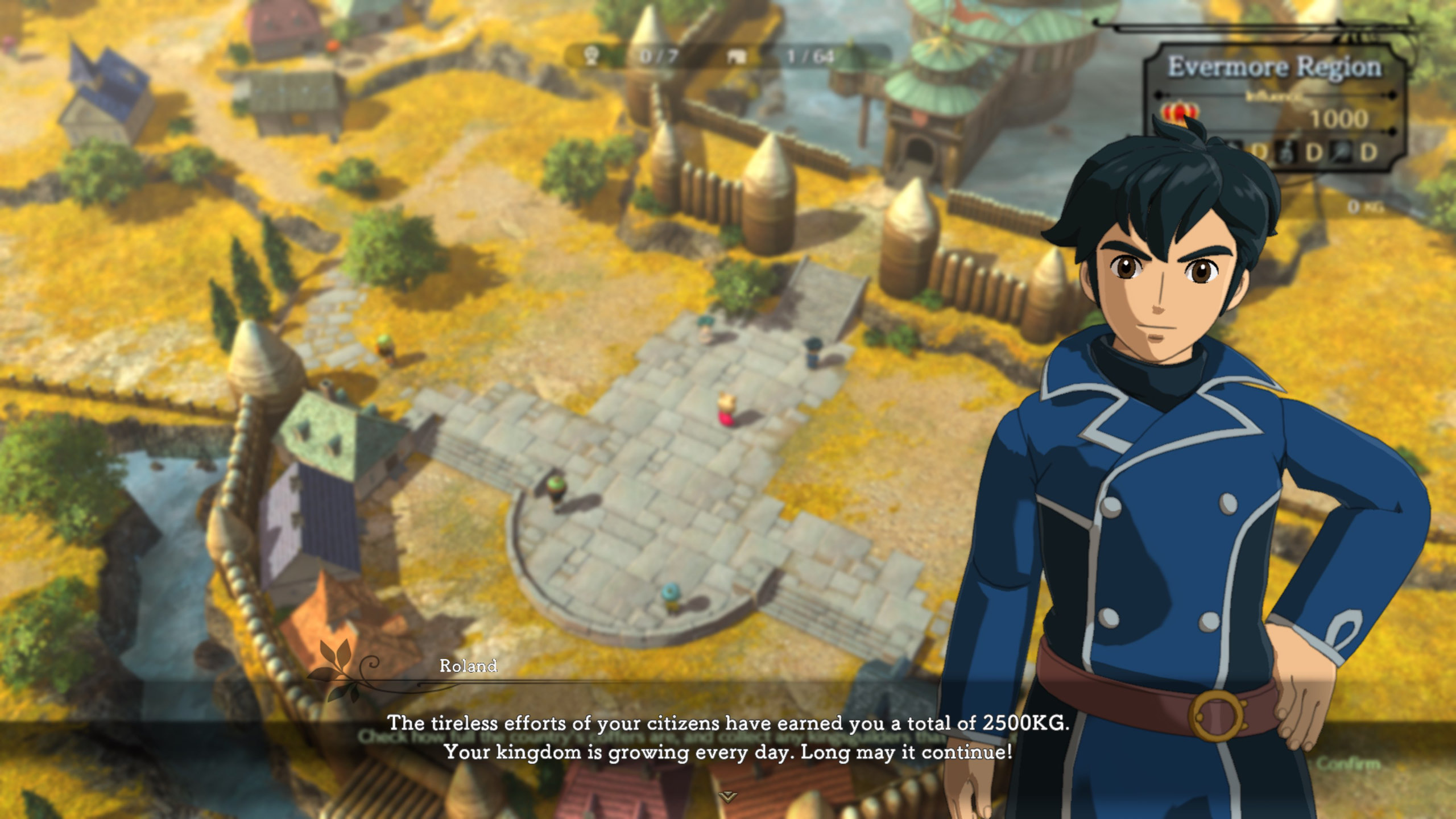
An Ambitious Promise
The president of an unknown nation is being driven into a city with his whole motorcade in tow. Suddenly, a missile blows the entire city to pieces. Roland, the prez, is far enough away from the blast to not be immediately vaporized—but the force of the explosion flips his car over, seemingly kills most of his entourage in the process, and before he can succumb to his own wounds, he’s teleported away to the fantastical “other” world from the first game as a younger version of himself… “Wait, what?”
What’s that, player? You want a breather? Well, Roland is dropped into the middle of a coup where Evan, a young boy with cat ears—or more accurately, the current heir to the throne—is about to be murdered by his father’s trusted advisor, Mausinger, whose race of micefolk has been oppressed by catkind for centuries. “Huh?! What is going on?!”
Truthfully, it’s one of the wildest, most insane introductions to a game I’ve ever played, and it hooked me immediately. Suddenly, as Roland, you’re entrusted to sneak Evan out of his newly-stolen kingdom away from guards who, again, are actively trying to kill the child. Oh, and Evan finds out that the death of his late father was a months-long scheme of Mausinger’s to usurp the throne—conveyed via the former king being slowly poisoned by his advisor over time. The only other person Evan loves and trusts in his life, Nella? She gets a fake-out death, then comes back and dies for real right in front of Evan! In case you were wondering, this all happens within the first 45 minutes of the game!
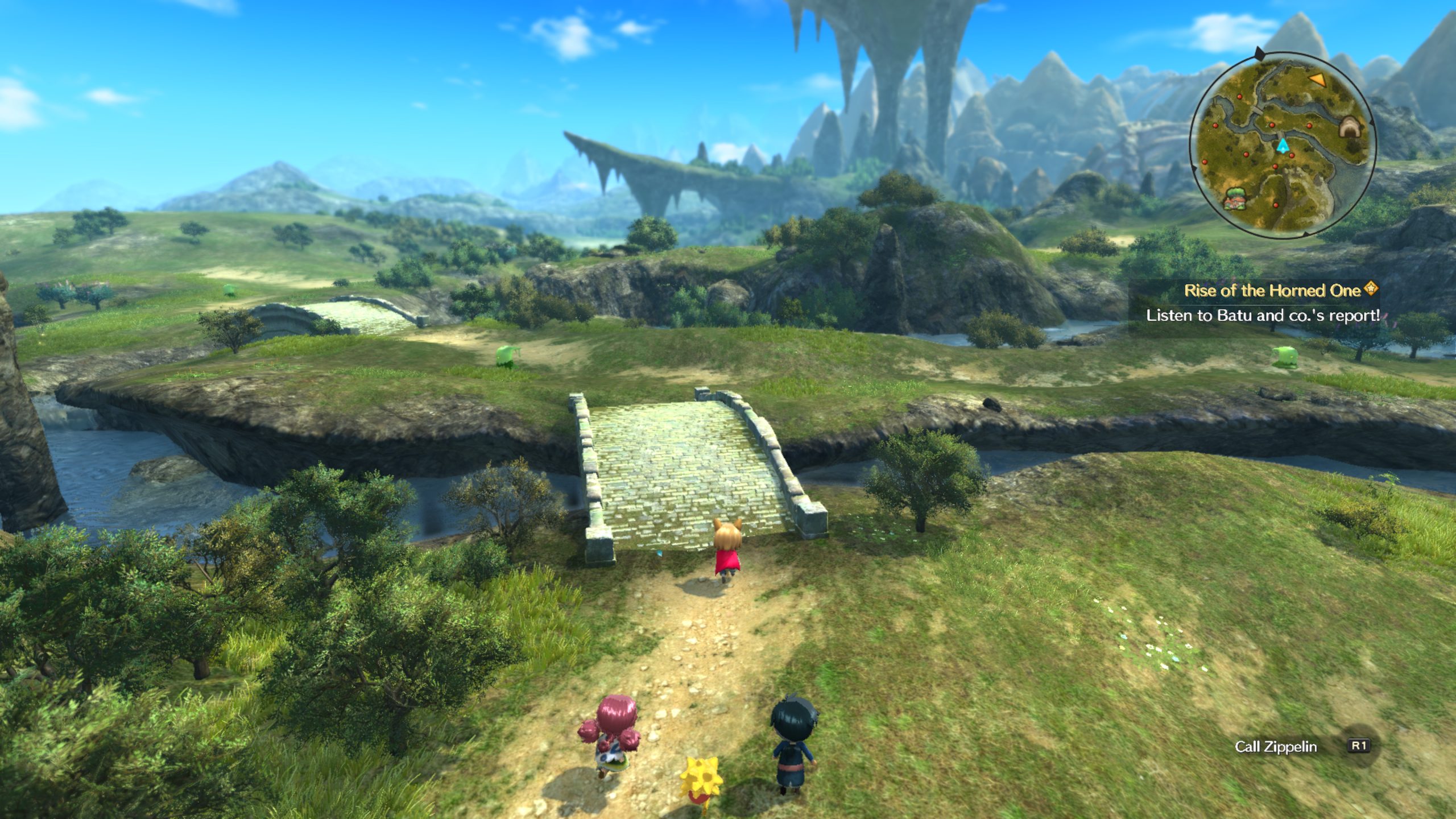
The Bigger They Are…
As a quick comparison, the original Ni no Kuni is much more subdued and “Miyazaki” in its presentation. There’s a cozy town, quirky characters, and you get to just walk around as Oliver and be adorable… Oh, and then he almost drowns in a river due to his ambitious friend’s recklessness and his mother’s heart gives out after successfully saving her son. Oh, and Philip, Oliver’s friend, feels personally responsible and the game, at some point, unpacks the hopelessness, depression, and anger he feels.
Yeah, there are many real resolutions to the game’s inciting incident that affects more people than just the protagonist—and it made the game feel all the more authentic for it (and showcased that subtle Ghibli touch). There are few, if any, dangling plot threads by the time Ni no Kuni ends. Oliver and company (not to be confused with the Disney movie) have subplots that allow you to better understand the characters in your party and the regions they come from. When it comes time to pay off all those small, relevant moments before the credits roll, the game earns its satisfying conclusion. Oliver earns the completion of his hero’s journey. As a result, the game earns the adoration Ni no Kuni fans tend to give it.
Its younger sibling, meanwhile, earns nothing. The most interesting parts of the game come from its extremities—the beginning and the end. Everything in between feels like either filler or wasted potential. Where the first game masterfully tackled grief, depression, fear, and trauma, Ni no Kuni II can barely even commit to its supposed lesson of “systemic oppression bad.” I could methodically take the game to task over this one aspect alone, but the TL;DR nature of it is: “And then Evan and Mausinger shake hands and agree that oppression is, indeed, not good.” It’s a little more complex than that, but not by much.
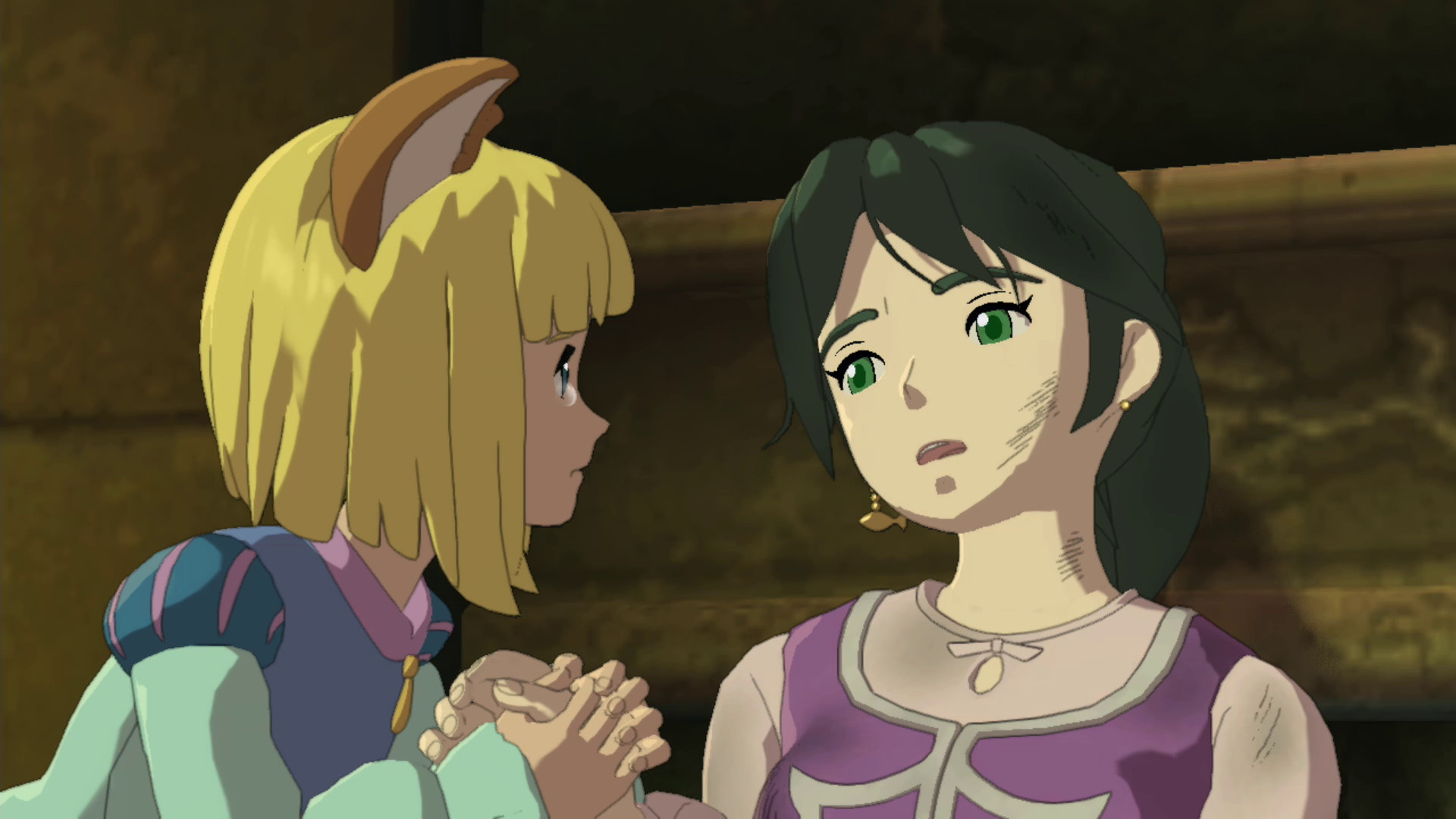
And Now, Reality
Is it unrealistic to expect Game of Thrones in my cutesy Miyazaki-lite game? Sure, but if that’s the case, you can’t have the stones to make it Evan’s central trauma and then ignore it until the last few acts. Oh, and the whole “Roland survives a city being blown up” subplot? That’s somehow covered even less. The more I played the Ghibli-deprived game, the more I couldn’t shake the feeling that I was playing the Diet Coke equivalent of the first game—and even that seems like an insult to Ni no Kuni’s greatness.
The magic was gone. The distinctive familiars with unique move sets were replaced by “Higgledies,” natural elements given (admittedly charming) physical form. The special attacks that once were big and cinematic now happened casually in the heat of battle with no extravagance or flair. Important scenes had fewer lines of voiced dialogue and less gorgeous cutscenes—and don’t get me started on the uneven voice acting for certain characters. It simply felt… wrong. I tried to love the game with the fervor of the first, but I just couldn’t.
But I didn’t quite hate Ni no Kuni II until I was unceremoniously told that I had to upgrade my kingdom to progress the main quest line. This isn’t something that happens once, but twice. The only way to then move forward when the game decides to arbitrarily screech to a halt is to recruit citizens from other regions to join your kingdom and build a minimum number of buildings that have in-game benefits. Recruitment only takes place through side quests. And I don’t mean Witcher 3 side quests that flesh out the world and characters; I mean good old-fashioned fetch quests. Or “go here and beat this enemy” quests. Often, once you retrieve an item for a prospective citizen of your burgeoning kingdom, they need another one. And perhaps even another after that!
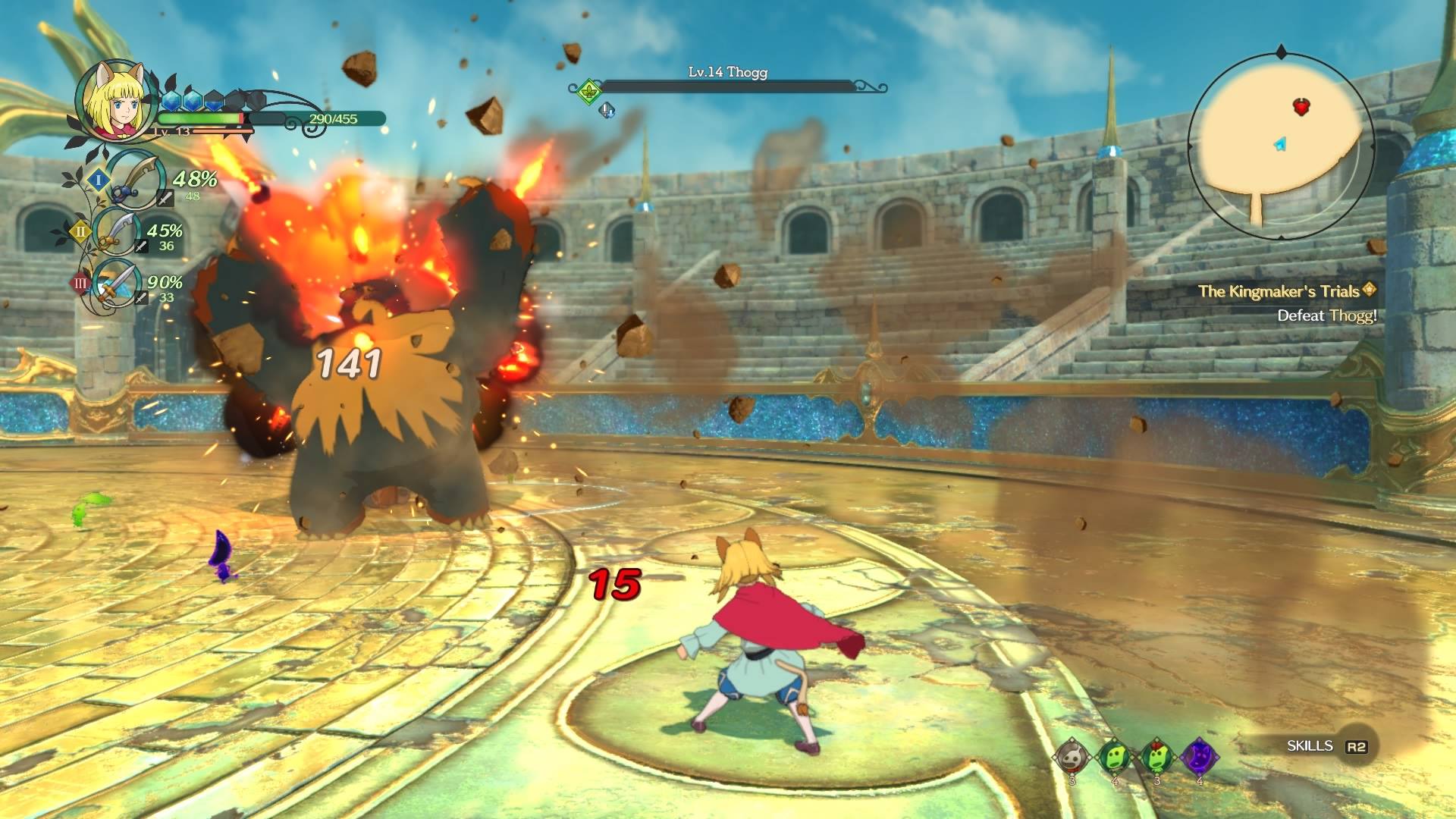
How Could It Have Gone So Wrong?
Story-wise, it makes complete sense that Evan’s kingdom should evolve with the game’s events. But when that’s only feasible through busy work in the form of tedious, uninspired side quests, it drags the whole experience down.
“Well, why wouldn’t you just mix the main and side quests so you would be adequately prepared?” Because the side quests don’t tell me anything about the world or characters I didn’t already know. The most I learned was that Roland took up fencing classes because he was bullied in school—oh, and one time, he was cryptic about having a son… Okay? That’s something, I guess. But this man came from a whole other world where he was a president. The game has little to say about that in service of maintaining Roland’s aloof “bootleg Batman” aura, and trust me, the game goes out of its way to make Roland this “chess master” when neither the game nor the character earns that privilege.
If this write-up seems sloppy and distractingly all over the place, then welcome to Ni no Kuni II! A game that has two promising, overly ambitious character arcs between Roland and Evan and can’t commit to either of them for fear of kneecapping the other—so both end up being half-hearted and limp. A game that wants to include city management, strategy (I’m not even going to talk about the skirmishes), and traditional action RPG trappings with all the “nuance” of a snake oil salesman.
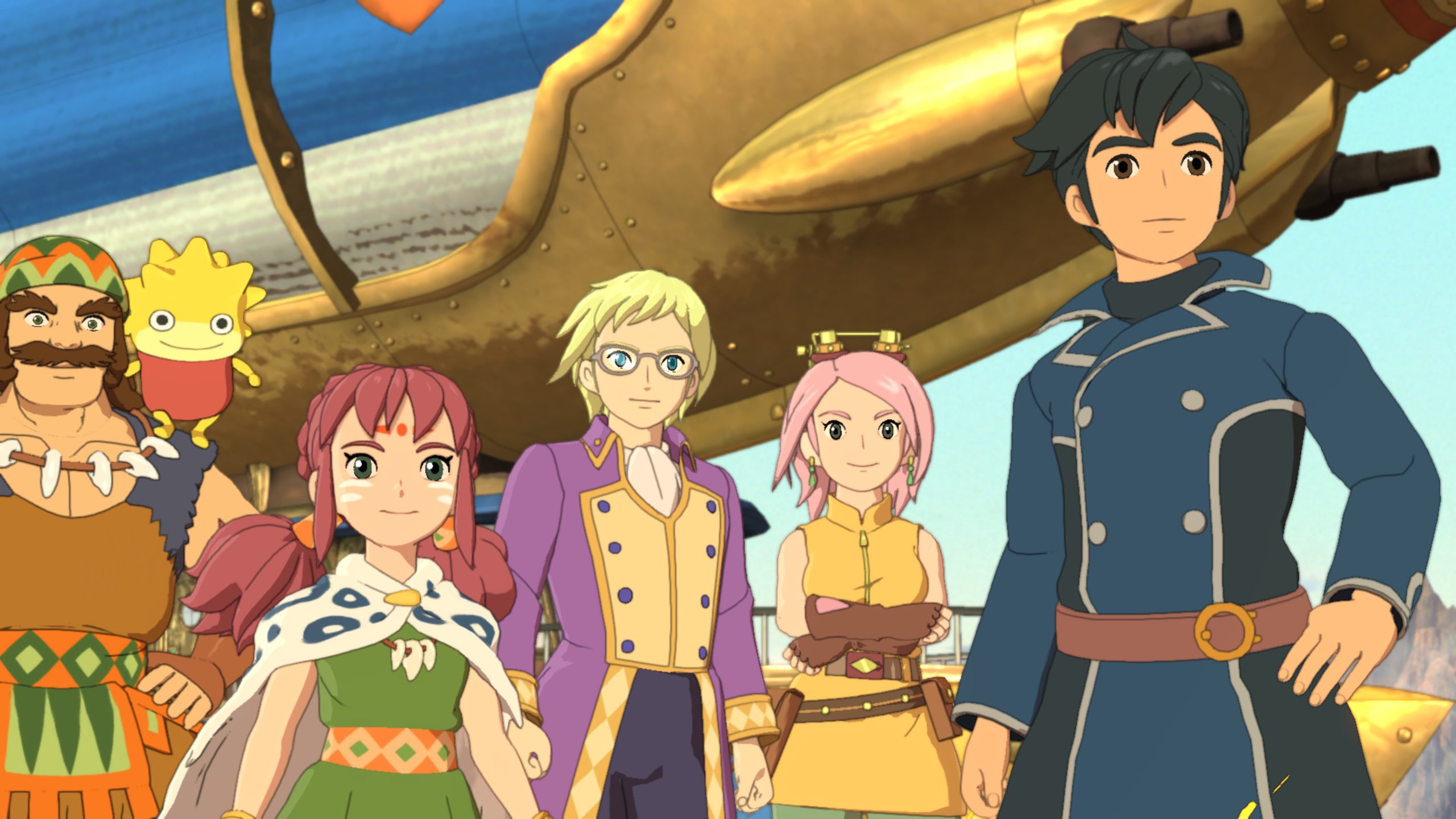
It Wasn’t Enough
I understand why some reviews applauded Ni no Kuni II for its “bold” attempts at talking about serious subjects. Video games usually don’t like talking about systemic oppression or the faults of capitalism for fear of alienating the “get these politics out of my games” crowd and hurting publishers’ bottom line.
But when it takes Oliver an entire 40 to 50 hours of playtime to eventually cope with and accept his mother’s death with deliberate, careful pacing in the first game, I’m sorry: “We made an attempt” simply isn’t good enough for me. In fact, at a particularly silly, mind-numbing point in the game where Roland sneaks back to the old kingdom to get intel, he says to Mausinger (paraphrased): “Well, the king made you chancellor, so obviously, y’all weren’t that oppressed.” For fear of writing more than I already have, I’ll just let that one settle for a second.
The one adjective you’ll never attribute to Studio Ghibli is “timid.” Seriously, go watch Grave of the Fireflies if you don’t believe me. Ghibli understands that both suffering and happiness exist in the world—and that’s OK! It’s natural! It’s life! What value would any journey have if life didn’t push back against our hopes and dreams to give us space to overcome the odds?
Ni no Kuni: Wrath of the White Witch taught me that it was OK to hurt. It was OK to not have all the answers when the questions came knocking at your door. It was OK to have moments of levity—and even humor—when it seemed like everything is hopeless. Most importantly, it taught me that your best foot forward was always enough.
Ni no Kuni II: Revenant Kingdom told me the destination supersedes the journey. That trauma is best left unprocessed and unaddressed. That systemic oppression begins and ends at the whims and wishes of two or three people rather than an intricate, nuanced network of steps and discussions involving entire communities and groups.

But You Can’t Ruin A Classic
I can forgive you, Ni no Kuni II, for being an everyman JRPG at your core. Maybe the faults of characterization, pacing, world-building, and everything else would even be passable at a point, as you carry a quarter of that Ghibli charm to the finish line.
But I’ll never forgive you for whispering where your predecessor shouted—more comfortable dipping a toe in the proverbial pool where your forebear had taken the plunge time and again. I can’t applaud as you ignorantly smile and pretend it doesn’t hurt when a knife plunges into your stomach. You may have the name, but you just don’t have the heart. You’re nothing more than a trembling coward in the shadow of a proud giant.
But, hey, at least you make your older sibling shine all the brighter, and that’s an achievement in itself.
Dwayne approaches every situation with an active ear, open mind, and willful heart. He’s always been a staunch critic of whatever show, movie, game, or comic fell into his lap, deepening his adoration for the fabled art of storytelling. With two years of official games journalism under his belt and a lifelong love for the medium and industry, owning every console from the PS1 era and beyond, Dwayne does what he’s always wanted to do: plays and talks about video games with a critical, nuanced eye to give audiences the perspectives and views he’d missed earlier in his life.


